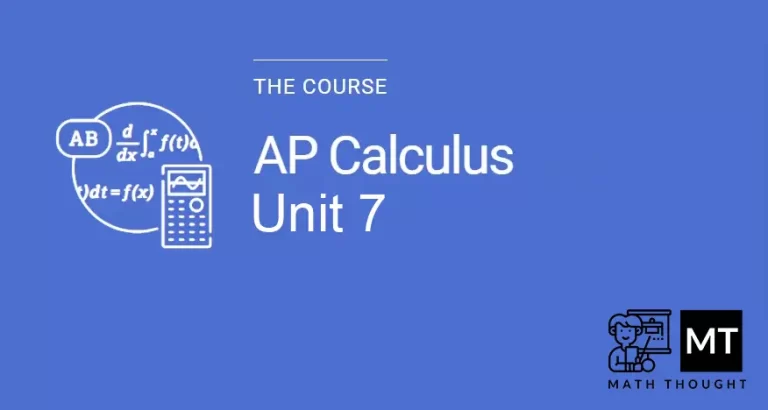This course prepares high school students planning to take the Calculus BC Advanced Placement exam. For more information about this exam, please click here. Students will study the main ideas found in differential calculus: limits, derivatives, and basic integration. By the end of the course, students will be able to demonstrate an adequate understanding of these topics.
To be successful in this course, students must be proficient in precalculus. Students may forgo enrolling in a precalculus course provided they have a strong background in algebra 2 and trigonometry. Please review the prerequisite before enrolling in this course. Students will not be able to complete the course without having a strong background in these subjects.
The topics discussed in AP Calculus BC are equivalent to the topics discussed at the college level: calculus 1 course and calculus 2. Consequently, this course moves at a faster rate than Calculus AB. Students who take the AP Calculus BC exam will also receive a subscore for the AP Calculus AB exam. When you take the BC exam you will receive AB Calculus subscore. Those who score a 3 on the exam may qualify for college credit for Calculus 1 and Calculus 2, whereas some colleges require at least a 4 on the exam.




![[Cal1] (01) Limits](https://calculus.maththought.com/wp-content/uploads/2023/10/Limits-768x439.png)

![[Cal1] (02) Derivatives](https://calculus.maththought.com/wp-content/uploads/2023/11/Derivatives-768x439.png)
![[Cal1] (03) Applications of Derivatives](https://calculus.maththought.com/wp-content/uploads/2024/02/Derivative-Applications-768x439.png)
![[Cal1] (04) L’Hôpital’s Rule](https://calculus.maththought.com/wp-content/uploads/2024/03/LHopitals-Rule-768x439.png)
![[Cal1] (05) Integration Basics](https://calculus.maththought.com/wp-content/uploads/2024/03/Dont-Divide-By-Zero-768x432.png)
![[Cal1] (06) Applications of Integrals](https://calculus.maththought.com/wp-content/uploads/2024/04/Integration-Applications-768x439.png)


![[Cal2] (01): Integration Techniques](https://calculus.maththought.com/wp-content/uploads/2025/01/IntgrationTech-USub-600pix.png)
![[Cal2] (02) Integration Applications](https://calculus.maththought.com/wp-content/uploads/2023/09/20231017_1315570-768x576.jpg)
![[Cal2] (03): Sequences](https://calculus.maththought.com/wp-content/uploads/2023/09/pi-day-768x240.webp)
![[Cal2] (04): Series Convergence Tests](https://calculus.maththought.com/wp-content/uploads/2023/09/Mathematical-infinity-sakkmesterke-Adobe-Stock-181238943-1597x1198-1-1597x700-1-768x336.jpeg)
![[Cal2] (05): Power Series](https://calculus.maththought.com/wp-content/uploads/2025/04/Lecture-40-Power-Series-Cover-768x432.png)
![Lecture Series: Calculus 1 [SP24]](https://calculus.maththought.com/wp-content/uploads/2023/09/How-To-Master-Calculus-01-768x439.webp)
![Lecture Series: Calculus 2 [FA23]](https://calculus.maththought.com/wp-content/uploads/2023/09/cal-poster02.jpg)


